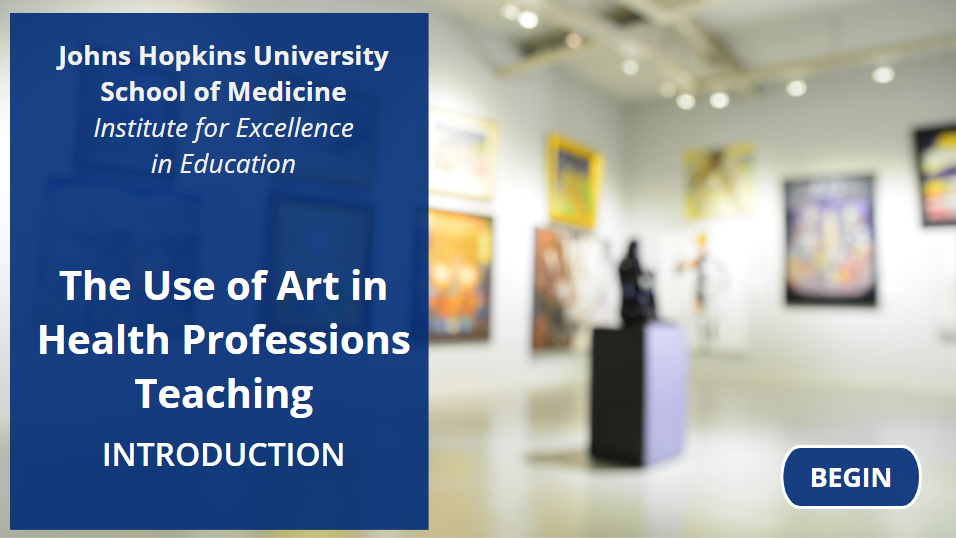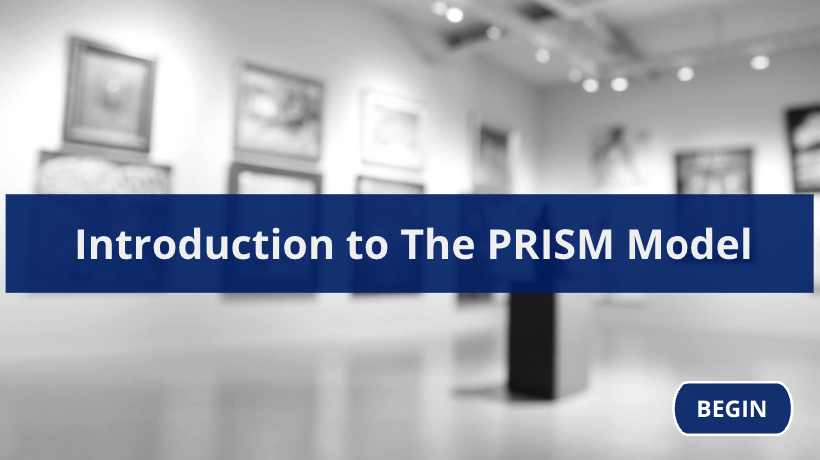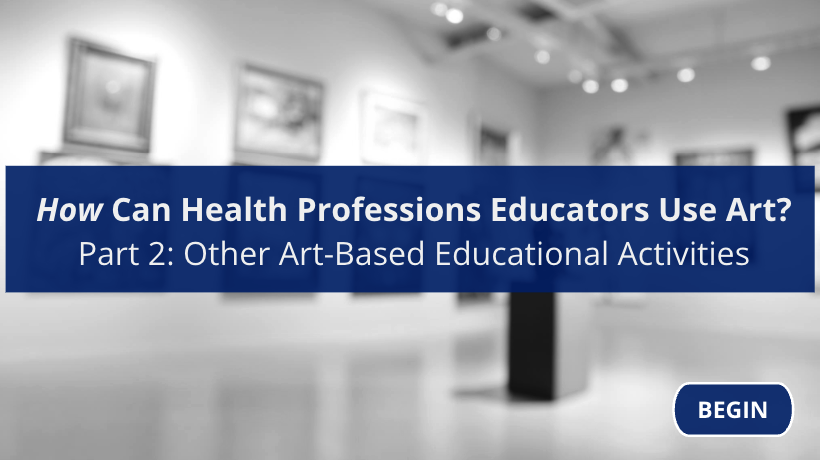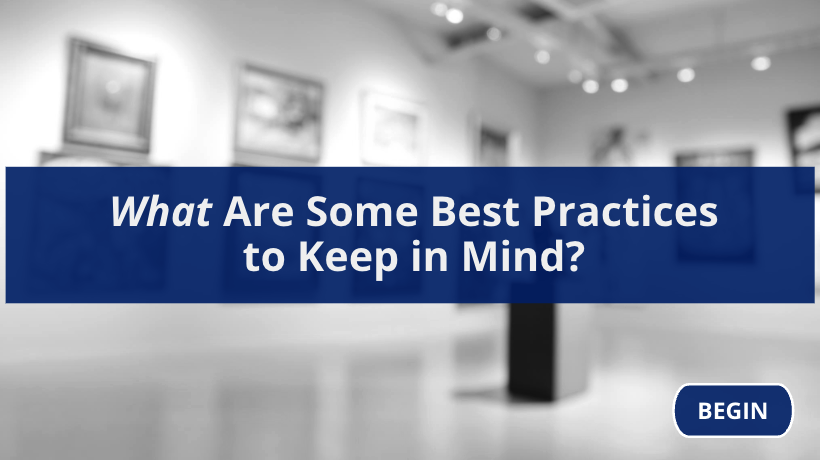Comments? Contact IEE.
1. Objectives
- Gain familiarity with existing evidence on the impact of visual arts-based education on health professions learners
- Understand how to apply the Prism Model in the design of visual arts-based programs/curricula to achieve desired educational outcomes (i.e., how to select arts-based learning activities that align with educational objectives/outcomes)
- Describe the core components of Visual Thinking Strategies (VTS), which is the visual arts-based learning activity with the strongest evidence base in health professions education
- Describe the structure and pedagogical functions of at least one other visual arts-based learning activity (e.g., the Personal Responses Tour, group poem, systems thinking routine)
- Describe and apply the criteria for image selection for VTS
2. Preparation in Advance
- Who are my learners?
- What educational goals/objectives am I seeking to achieve when applying visual arts-based education?
- What barriers might I face to doing so?
3. The Module
4. Application of the Module
Applying the Prism Model: First, identify a topic/learning domain you wish to teach using a visual arts-based learning activity. Next, define your educational goal/objectives and apply the Prism model to select the visual arts-based method (e.g., VTS, PRT, Group Poem, Systems Thinking) that best aligns with your educational goal/objectives.
5. Next Steps and Coaching
Optional: Facilitate a VTS session with learners and video record the session. Review recording with self-critique guide: VTS Certified Facilitator Rubric
6. Summary Points
-
Integration of Arts and Humanities in Medical Education
- The Association of American Medical Colleges (AAMC) initiated the FRAME project, highlighting the role of Arts and Humanities in medical education.
- A 2020 AAMC report emphasized the necessity of incorporating Arts and Humanities across the continuum of health professions education to build competencies and sustain well-being.
-
Evidence of Benefits
- There is extensive evidence, including randomized controlled trials and observational studies, demonstrating the positive impacts of exposure to the Arts and Humanities on health professions learners.
- Benefits include enhanced communication skills, observation skills, critical thinking, tolerance of ambiguity, and awareness of implicit biases.
-
Clinical and Educational Value
- Engaging with art, such as observing and reflecting on visual artworks, has significant implications for trainee and faculty well-being, person-centered care, and creating equitable learning and clinical environments.
-
The PRISM Model
- An expansive scoping review published in Academic Medicine in 2022 led to the development of the PRISM model, outlining four core functions of Arts and Humanities in medical education:
- Mastering Skills
- Perspective Taking
- Personal Insight
- Sociocultural Critique/Social Advocacy
- An expansive scoping review published in Academic Medicine in 2022 led to the development of the PRISM model, outlining four core functions of Arts and Humanities in medical education:
-
Relevance to Accreditation and Competency Standards
- The functions of the PRISM model align with competencies required by accreditation bodies, emphasizing the importance of self-reflection, collaborative practice, critical thinking, and structural competency.
-
Gap in Faculty Development
- Despite the broad evidence base, opportunities for health professions educators to engage with Arts and Humanities pedagogies are limited.
- Less than 5% of studies focus on faculty learners and continuing education in arts-based activities.
-
Skills and Attributes Enhanced by Art-Based Education
- Key skills and attributes improved through art-based education include observation skills, communication skills, empathy, visual literacy, and well-being, supported by a body of evidence.
Thanks and Attributions
We’d like to give special thanks and attribution to the following organizations for allowing us to use videos and works of art from their collections in the teaching activities described and portrayed in this module.
The Walters Art Museum | https://thewalters.org/
Evergreen Museum and Library | https://museums.jhu.edu/evergreen-museum-library/
The Baltimore Museum of Art | https://artbma.org/
The American Visionary Art Museum | https://www.avam.org/
About the Authors
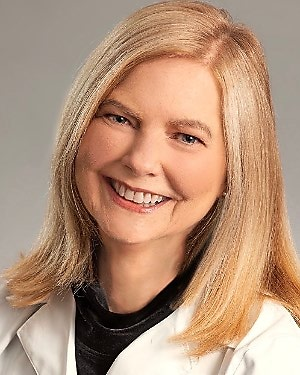
Margaret Smith Chisolm, M.D.
Director of the Paul McHugh Program for Human Flourishing, Psychiatry and Behavioral Sciences, Johns Hopkins University School of Medicine Professor of Psychiatry and Behavioral Sciences
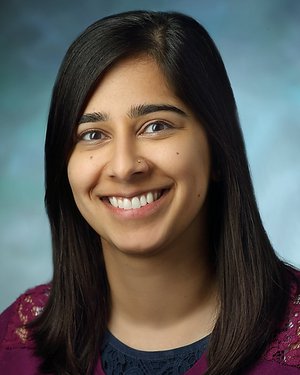
Kamna Balhara, M.D., M.A.
Associate Program Director, Emergency Medicine Residency
Associate Professor of Emergency Medicine

